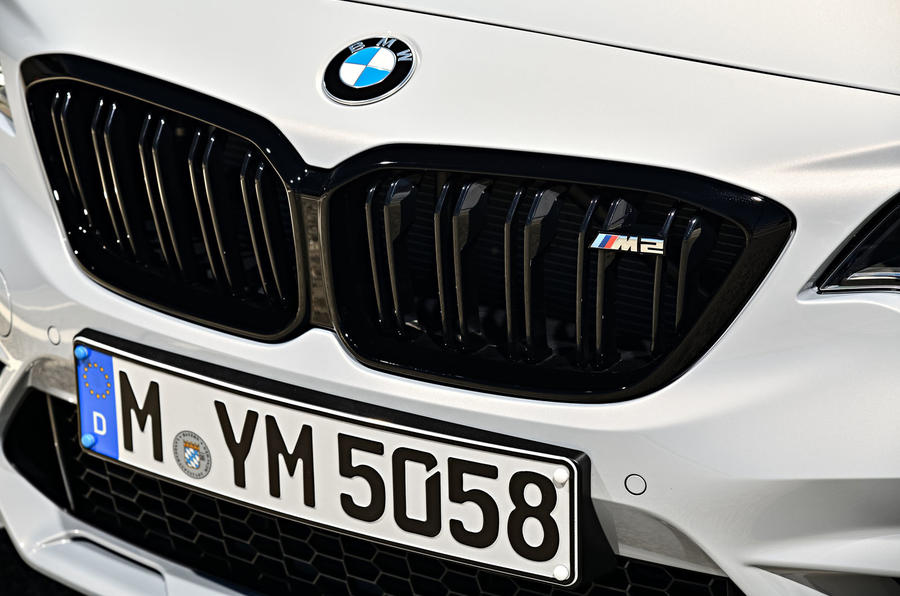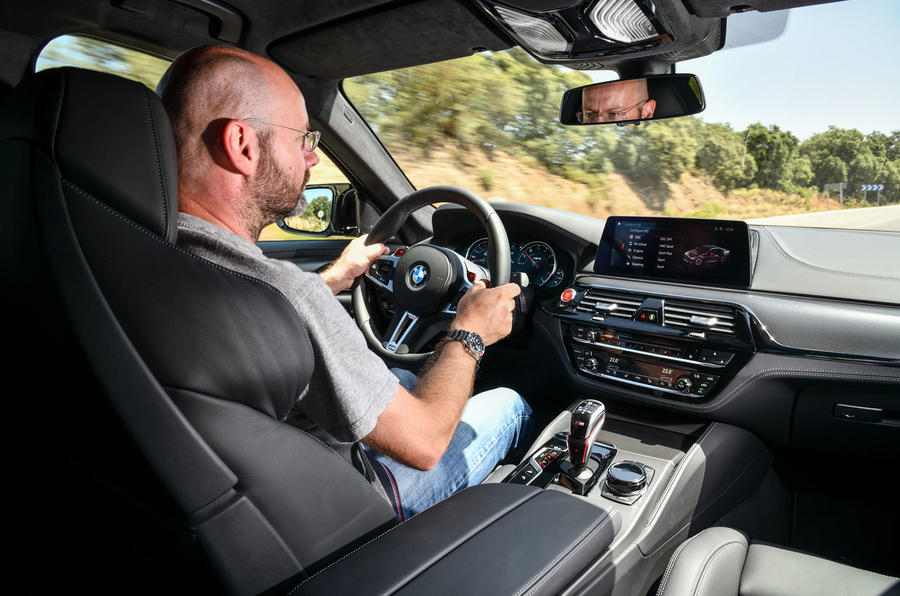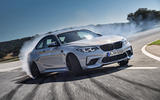What is it?
Here’s how it goes, then. I’m not sure I’d ever seen it written down like this before but I suppose it’s obvious.
BMW M division cars have a clear hierarchy: CS models sit at the top, then Competition models (like this one is), then high-performance models (BMW those badged just M2, BMW M3, whatever) and then M Performance models (such as the M235i).
It’s the first time I’ve seen it presented like that, but, as ever more CS and Competition models arrive, perhaps BMW feels it needs clarifying, given the increasing number and diverse types of M car it would like to sell.
This one, then, is the M2 Competition, which, despite that hierarchy, simply replaces the standard M2, rather than adds to it, BMW as with the M4 and BMW M5. And when BMW announced it, at around £3000 more than the standard car (still sub-£50k), it looked like a rather enticing package.
Basically, it now has the engine from the M3 and M4 in the front of it, so a twin-turbo unit rather than the single-turbo one that has been in the M2 since its launch in 2016. It’s slightly detuned to 404bhp, rather than the 425bhp that it arrives with in the M3 and M4.
The front-mounted inline six-cylinder unit drives through either a six-speed manual or seven-speed dual-clutch automatic transmission (we tried both), to an electronically controlled limited-slip differential at the rear, and to the rear wheels. There’s a new exhaust, too, with electronically controlled flaps, for some additional noise, and a petrol particulate filter.
Elsewhere, the M2 Competition is harder, keener and sharper. It gets a wishbone-shaped engine bay brace, and there's a retuned steering map and some rose joints in the rear suspension. Together with tweaks to spring and (passive-only) damper settings and the stability control system, the whole caboodle is said to “improve response” and enable “more progressive on-the-limit” handling.
There are bigger brakes, too (not carbon-ceramics), which, when the Audi TTS and Porsche 718 Cayman GTS have just arrived, sounds like a useful way of keeping the M2 up with the, er, competition.
Other changes are limited. The design alterations at the front are largely about getting more air to the engine’s cooling system, which is bigger than on the previous M2 on account of the additional 40bhp and 62lb ft (total torque is now 405lb ft). Plus, you can have new wheels, optional new M seats and M-ish mirrors. Woo.



















































Join the debate
Add your comment
Front "mid" engined
It's too often ignored that BMW's are technically mid engined in that the engine is behind the front axle in the same was as, for instance, a Cayman's engine is ahead of the rear axle. Hence 50/50 weight distribution from a car with the engine in front of the driver.
50 Pence wrote:
That sort of thing used to get reported on, having read reviews of my old 924 that was mentioned as it too was front mid, I also remember it being discussed with MGR 75/ZT V8's as the MG had the engine pushed as close to the bulkhead for better handling balance and the 75 had it pushed further forward for better sound insulation and refinement. As for this M2, as good as it is, I'd still take a 1M over it purely down to styling, as I think the old 1 coupe was a stunning looking car. Comparing it to a cayman or f type is daft, its like comparing an mx5 with a golf gti, different cars that can happen to share similar prices.
Knockout Blow
Matt ends his piece by writing, "When Porsche moved to a four-cylinder engine, I wondered if its rivals would sense a weakness, an opportunity. BMW is the first to really take it. I give you one of the best driver’s cars of the year". If that's the body blow BMW delivered to Porsche, who's betting against a Porsche TKO with the new Cayman GT4?
Why always the Cayman comparison?
I never quite get the constant comparison with the Porsche Cayman. The only thing they can be compared on is possibly perfrormance and price, but that apart they're not rivals, not even close ones. One is hatchback-derived coupe, the other is a purpose built, focussed sports car. So it's inevitable the Cayman will be much lighter and have a more focussed drive.